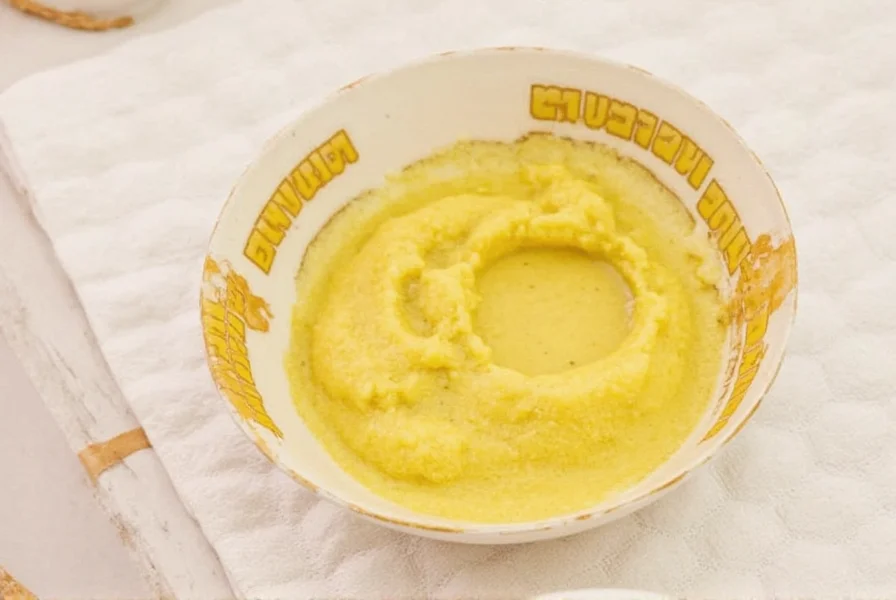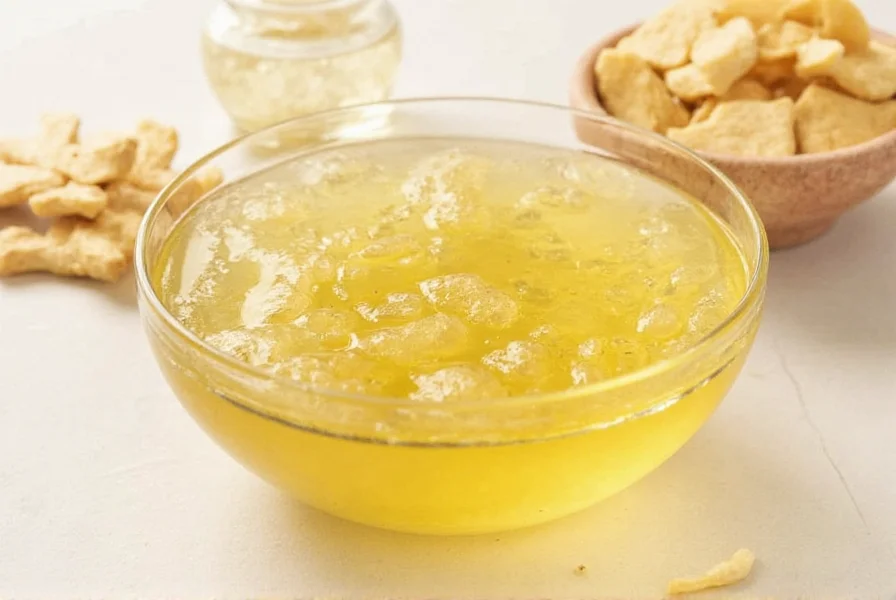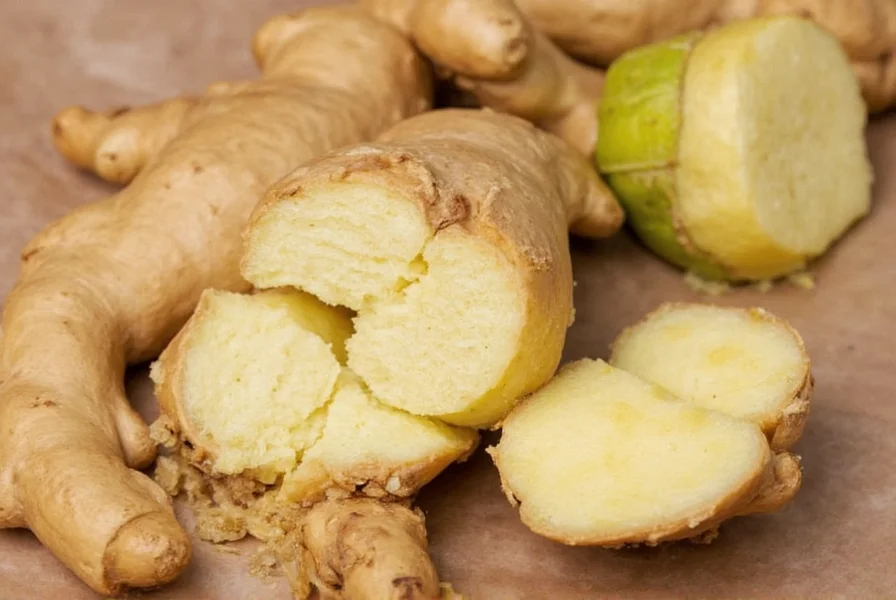For centuries, traditional medicine systems across Asia and Africa have utilized ginger poultices as a natural remedy for various ailments. This simple yet effective treatment harnesses the therapeutic properties of fresh ginger root applied directly to the skin. Unlike oral consumption, a poultice delivers concentrated benefits through topical application, creating a localized warming effect that increases blood flow to the affected area.
The Science Behind Ginger Poultices
Ginger contains potent bioactive compounds, primarily gingerol, which gives it powerful anti-inflammatory and analgesic properties. When applied topically as a poultice, these compounds penetrate the skin and interact with pain receptors while promoting circulation. Research published in the Journal of Medicinal Food confirms that topical ginger application significantly reduces pain and stiffness in osteoarthritis patients.
Unlike oral ginger supplements that must pass through the digestive system, a poultice delivers therapeutic compounds directly to targeted areas. This makes it particularly effective for localized pain relief without potential gastrointestinal side effects associated with high oral doses.
How to Make an Effective Ginger Poultice
Creating a ginger poultice requires minimal ingredients but proper technique ensures maximum effectiveness. Here's a step-by-step preparation method trusted by traditional healers:
| Ingredient | Amount | Purpose |
|---|---|---|
| Fresh ginger root | 2-3 inches | Primary therapeutic agent with anti-inflammatory properties |
| Flour or cornstarch | 2 tablespoons | Binder to maintain poultice consistency |
| Water or carrier oil | As needed | Moisture to activate compounds and aid application |
| Clean cloth | 1 piece | Application medium for skin contact |
- Peel and grate 2-3 inches of fresh ginger root using a fine grater
- Mix grated ginger with 2 tablespoons of flour or cornstarch
- Add small amounts of warm water or carrier oil (like coconut or olive oil) until paste forms
- Spread mixture evenly (1/4 inch thick) on clean cotton cloth
- Fold cloth to enclose mixture and apply directly to affected area
- Leave in place for 20-30 minutes, checking skin periodically
- Remove and clean skin with mild soap and water

Conditions That May Benefit from Ginger Poultices
Ginger poultices offer therapeutic benefits for several common conditions. Scientific research and traditional use support their effectiveness for:
- Muscle soreness and tension - The warming effect increases blood flow to fatigued muscles
- Arthritis pain - Multiple studies show reduced joint pain and stiffness with regular application
- Respiratory congestion - Applied to chest for coughs and bronchitis (avoiding sensitive skin)
- Menstrual cramps - Abdominal application provides soothing warmth
- Minor joint injuries - Helps reduce swelling and promote healing
A 2021 clinical trial demonstrated that participants using ginger poultices for knee osteoarthritis experienced 40% greater pain reduction compared to the control group after four weeks of consistent application. The researchers attributed this to ginger's ability to inhibit inflammatory pathways locally.
Safety Considerations and Contraindications
While generally safe, ginger poultices require proper usage to avoid adverse effects. Understanding how to make ginger poultice for pain relief safely is crucial for optimal results.
Individuals with sensitive skin should perform a patch test before full application. Some users experience mild skin irritation or redness, which typically resolves within hours after removing the poultice. Never apply to broken skin, open wounds, or mucous membranes. People taking blood-thinning medications should consult their healthcare provider before regular use, as ginger may enhance these effects.
Limit application time to 20-30 minutes per session, and allow at least 2 hours between applications. Discontinue use if you experience burning sensations, blistering, or prolonged redness. Pregnant women should consult their healthcare provider before using ginger poultices, especially during the first trimester.

Ginger Poultice vs. Other Ginger Applications
Understanding the differences between various ginger applications helps determine when a poultice offers the best solution. While ginger tea provides systemic benefits and supplements offer concentrated doses, poultices deliver targeted relief.
For localized pain like muscle strains or arthritic joints, the ginger root poultice provides more direct relief than oral consumption. The topical application creates a sustained warming effect that penetrates deep into tissues. For respiratory issues, chest application of a ginger poultice works differently than inhaling ginger steam, with the poultice providing longer-lasting relief through continuous absorption.
When comparing homemade ginger poultice recipes, the traditional method of using fresh grated ginger outperforms pre-made products in both potency and cost-effectiveness. Commercial ginger patches often contain lower concentrations of active compounds and additional chemicals that may cause irritation.
Maximizing Your Ginger Poultice Results
Several techniques enhance the effectiveness of your ginger poultice application. For optimal ginger poultice for inflammation results, consider these evidence-based tips:
- Use organic ginger root for maximum potency and minimal pesticide exposure
- Apply immediately after preparation to preserve active compounds
- Cover the poultice with plastic wrap to maintain moisture and heat
- Combine with gentle massage before application to enhance circulation
- Follow with a warm compress to extend the therapeutic warming effect
- Use consistently for 10-14 days to assess full benefits for chronic conditions
For respiratory issues, adding a few drops of eucalyptus oil to your natural remedy ginger poultice application can enhance decongestant properties. Those using ginger poultice for arthritis should apply during periods of moderate activity rather than immediately before bed, as the warming sensation might interfere with sleep for some users.
When to Consult a Healthcare Professional
While ginger poultices offer valuable natural relief, they shouldn't replace professional medical care for serious conditions. Consult a healthcare provider if you experience:
- Pain that persists beyond 2 weeks of consistent poultice use
- Signs of infection like increasing redness, warmth, or pus
- Severe swelling or inability to move the affected joint
- Skin reactions that continue after removing the poultice
- Symptoms that worsen despite treatment
Integrating ginger poultices into a comprehensive treatment plan often yields the best results. Many physical therapists now recommend them as complementary therapy alongside conventional treatments for musculoskeletal conditions.
Frequently Asked Questions
How often can I apply a ginger poultice?
For most conditions, applying a ginger poultice 1-2 times daily provides optimal results without skin irritation. Allow at least 2 hours between applications and monitor your skin's response. For chronic conditions like arthritis, consistent daily use for 2-4 weeks typically yields the best outcomes. Always discontinue use if you experience skin irritation or adverse reactions.
Can I use a ginger poultice for back pain?
Yes, ginger poultices work effectively for back pain relief. The warming properties increase blood flow to sore muscles and reduce inflammation in the affected area. Apply the poultice to the painful region for 20-30 minutes, 1-2 times daily. Many users report noticeable improvement in lower back pain within 3-5 days of consistent use. For best results, combine with gentle stretching exercises.
How long does a ginger poultice stay effective after preparation?
A freshly prepared ginger poultice maintains maximum potency for about 30 minutes after mixing. The active compounds begin to degrade once exposed to air, so immediate application yields the best therapeutic results. If you need to prepare it in advance, store the ginger paste in an airtight container in the refrigerator for no more than 2 hours before use, though this reduces effectiveness compared to fresh preparation.
Can children use ginger poultices safely?
Children over 6 years old can use diluted ginger poultices with proper supervision, but always perform a patch test first. Use half the ginger concentration recommended for adults and limit application time to 10-15 minutes. Never apply to infants or toddlers due to their sensitive skin and developing systems. Consult a pediatrician before using ginger poultices for children, especially for respiratory issues, as improper application could cause skin irritation.
What's the difference between a ginger poultice and a ginger compress?
A ginger poultice uses fresh grated ginger mixed with a binder applied directly to the skin, creating sustained contact with active compounds. A ginger compress typically involves soaking a cloth in ginger tea or infusion and applying it to the affected area. Poultices generally provide more potent, longer-lasting effects due to direct contact with raw ginger compounds, while compresses offer milder, more temporary relief. For serious inflammation, the ginger root poultice delivers superior therapeutic benefits.











 浙公网安备
33010002000092号
浙公网安备
33010002000092号 浙B2-20120091-4
浙B2-20120091-4